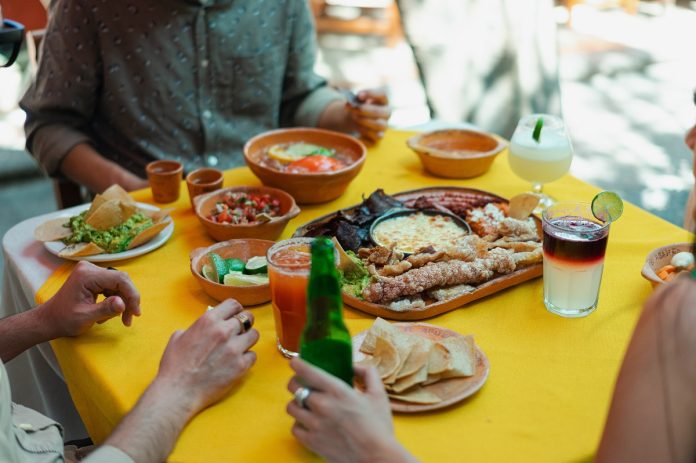
Each year, the Latin community looks forward to Hispanic Heritage Month to commemorate and recognize Latin countries’ freedom from Spain and the cultural milestones they have made since. Observed from September 15 to October 15, the month-long celebration represents when many Latin countries gained independence, a majority on September 15.
First enacted in America as a week-long celebration in 1968 by President Lyndon Johnson, Hispanic Heritage Month was later expanded into a month-long observation by President Ronald Reagan in 1988. Florida and New York remain among the top four states with large Hispanic populations in the U.S., but now, even countries that don’t have a large influx of Latin populations acknowledge Hispanic Heritage Month with celebrations around the world.
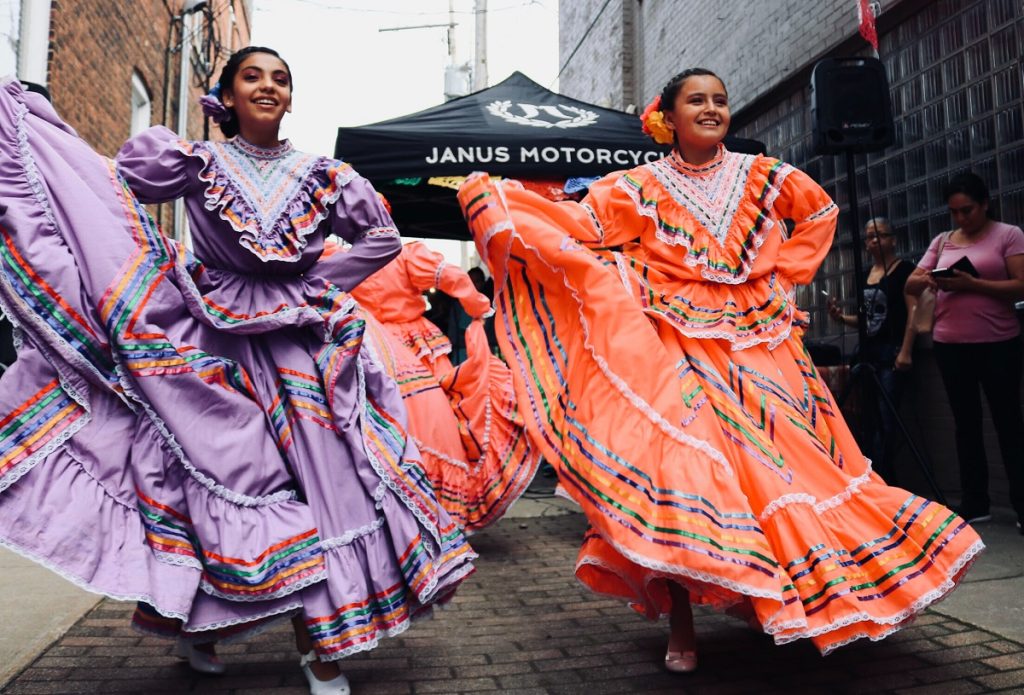
The U.S., which is home to nearly 60 million Hispanic Americans, can expect to see people celebrating annually with parades, flags, colorful displays and, of course, lots of traditional foods.
Unlike language and religion that can often be culture-bound, food is a uniting element that knows no barriers. It can connect us to places around the world we might not otherwise experience or make us feel a sense of home simply from the aroma of a specific ingredient. During Hispanic Heritage Month, food is also used as a center of celebration. Latin-Caribbean food expresses culture, reflecting a deep history of Indigenous influence, as well as a multicultural fusion of spices, herbs and flavors brought to the islands from all around the world.

Celebrate and indulge in Latin-Caribbean culture and an exploration of authentic cuisine with these unique Hispanic Heritage Month recipes.
Cuba
Cuba is the largest spanish-speaking island in the Caribbean, and Cuban cuisine has a heavy Spanish, African and Indigenous Taíno influence. Though ropa vieja (shredded beef with rice) and tostones (twice-fried plantain slices) might be the first that come to mind when thinking of Cuban dishes, there are some delicious lesser-known authentic recipes you will want to keep bookmarked. Like Rabo Encendidio, a savory dish that brings distinct Cuban flavor to a Caribbean classic.
Rabo Encendido – Cuban Oxtail Stew
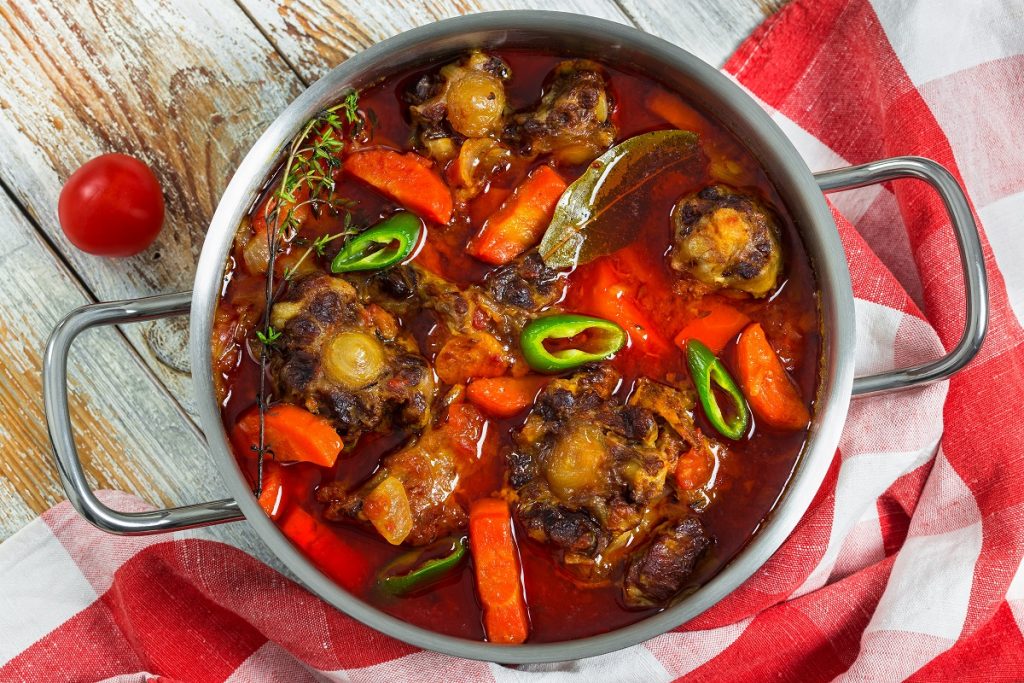
What you need:
- 4 pounds oxtail
- 4 garlic cloves
- 2 onions, dinced
- 1 teaspoon ground cumin
- 1 teaspoon ground oregano
- 8 ounces tomato sauce
- 1/2 Scotch bonnet pepper
- 3 large carrots
- 7 ounces pimientos morrones (bell peppers)
- 3 bay leaves
- 7 ounces of white wine
- 3 ounces of water
- Black pepper
- Salt
- 3 tablespoons of oil
- 1 bottle of Spanish red wine
What to do:
- Trim the oxtail and season with salt and pepper.
- Preheat oven to 350 degrees Fahrenheit. Add oil to a cast iron skillet and place on medium high heat on the stove. Add the oxtail, making sure to sear all sides. Once seared, transfer meat to a separate bowl and set aside.
- In a separate pan or skillet, saute onions, pimientos morrones (bell peppers), Scotch bonnet pepper and carrots. Add in garlic, salt, pepper, cumin and oregano, stirring to combine. Cook for about 10 minutes.
- Pour in the tomato sauce, red wine and bay leaves, stirring to combine.
- Transfer oxtail back to the cast iron skillet. Cover and bake for 4 hours.
- Sprinkle with parsley, serve with congrí (mixed rice and black beans) and enjoy!
Puerto Rico
As a colony under Spain’s rule for over 400 years, Puerto Rico’s fare has an overwhelming Spanish influence, though some African and Indigenous ingredients are still at its core. Shortly after Puerto Rico gained independence from Spain in 1897, the island ceded to the United States, becoming a colony the following year and a U.S. territory nearly 20 years later in 1917. As such, Puerto Rican cuisine gained some North American influence, particularly in terms of how meals were cooked, like using locally sourced corn oil for frying delicious, crispy snacks and sides.
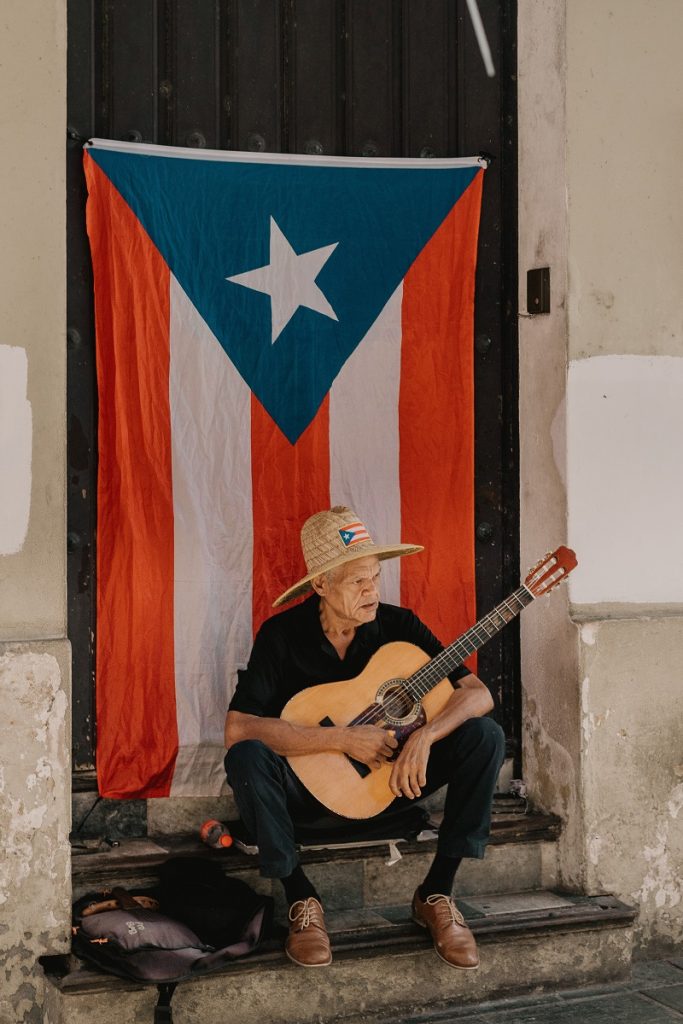
While you’ll definitely want to enjoy traditional mofongo (fried plantains), empanadas and arroz con gandules (rice with pigeon peas), bring an extra homestyle inspired dish to your Hispanic Heritage Month party with these stuffed green banana fritters.
Alcapurria – Meat Stuffed Green Banana and Taro Root Fritter
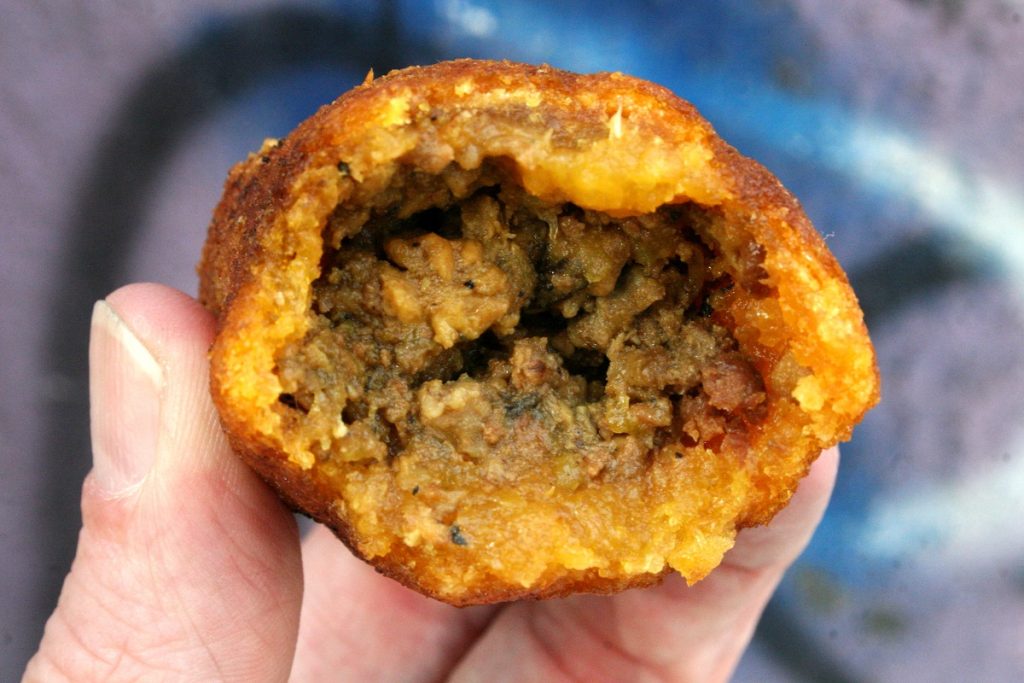
What you need
For the dough:
- 6 green bananas
- 2 pounds taro root
- Sazon Culantro/Achiote packet
- 1 ½ teaspoon salt
- 1 tablespoon oil
- 2 tablespoon butter
- 2 cups corn oil, for frying
For the filling:
- 1 pound beef, ground
- 2 tablespoons olive oil
- 1 teaspoon of salt
- Pinch of black pepper
- ½ teaspoon dried oregano
- 1 onion, chopped
- 10 pimentos
What to do
For the dough:
- Peel the skin from the green bananas and clean the taro root using a peeler to remove skin.
- Put the green bananas and taro root in a large bowl filled with salted water and let sit.
- Remove the green bananas and taro root from the salt water and add to a food processor, pureeing until smooth and a dough forms.
- Transfer the dough to a bowl, add the Sazon packet, salt, oil and butter and mix. Cover and refrigerate overnight.
For the filling:
- Place a pan on the stove and place on high heat. Add olive oil and saute the chopped onion. Once the onion is softened, add in the pimentos.
- Add the ground beef with salt, pepper and oregano and brown, stirring continuously.
- Once all cooked, add to a glass bowl.
Making the fritters:
- Heat a deep fat fryer with corn oil to 375 degrees.
- Using your chilled dough that sat overnight, scoop ⅓ cup portions out onto a pan brushed with vegetable oil so they don’t stick. Flatten the dough balls until a thin circular shape is formed.
- Scoop 2 tablespoons of the meat into the middle and roll until up. Before rolling completely to the end, fold in the sides, roll the rest of the patty and pinch the ends so they are sealed.
- Using a metal skimmer, place the formed fritters into the oil and fry until golden and crispy, about 7 minutes. Drain excess oil from the fritters using paper towels.
- Eat alone or pair with your favorite Puerto Rican dipping sauce and enjoy!
Dominican Republic

The Dominican Republic’s major culinary roots stem from Europe, Africa and the Indigenous Taíno inhabiting the Greater Antilles. Many traditions here revolve around tasty, home cooked dishes and sweets with recipes that have been in the family for multiple generations, so for your Hispanic Heritage Month celebrations, make sure to check out all the desserts the DR has to offer.
If you’ve got a bit of a sweet tooth, you’re probably familiar with indulgent Dulce de leche (Dominican caramel sauce), but if you’re looking for a deep-rooted Dominican Republic dessert that will “wow,” add this unusual treat to your Hispanic Heritage Month menu. Noted as one of the most popular Dominican desserts, this strange combinations of ingredients create a nostalgic, sweet and creamy spice flavor that is enjoyed by family and friends as a special dish during Lent.
Habichuelas con Dulce – Sweet Cream of Beans

What you need:
- 4 cup red kidney beans, boiled
- 6 cup water, from boiling the beans
- ½ pound batata (sweet potato), cubed
- 2 ½ cups coconut milk
- 3 ½ cups evaporated milk
- 1 cup sugar
- 1 ½ teaspoons vanilla extract
- 2 cinnamon sticks
- 8 cloves
- ½ cup raisins
- ¼ teaspoon of salt
What to do:
- Soak beans overnight the night before. Then, boil the beans on high for about 90 minutes, or until they are completely soft.
- Strain the beans, reserving the water they boiled in, and add both the beans and water to a blender. Puree and strain again.
- Add beans, coconut milk and evaporated milk to a pot on low-medium heat and simmer.
- Stir in the sugar, vanilla extract, cinnamon, cloves and salt.
- Add diced sweet potatoes into the pot and continue simmering until soft.
- Stir in the raisins and cook for 8 minutes. Remove the cinnamon sticks and cloves, then simmer for another 2 minutes, mashing down the sweet potatoes as you stir.
- Remove from heat and let cool. Once the mixture is no longer warm, chill in the refrigerator.
- Pour a serving into a cup or bowl, add Dominican milk cookies and enjoy!
































